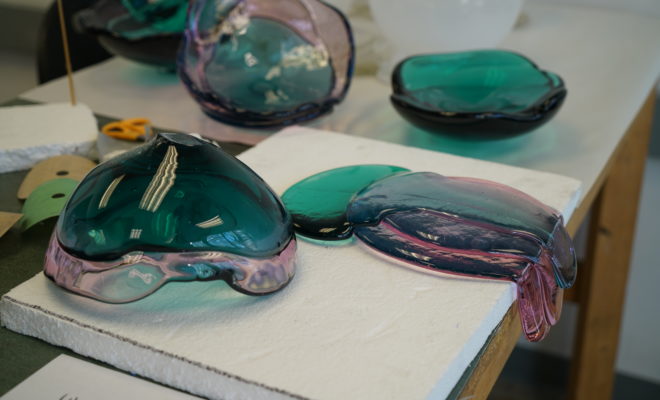
Design
Elinor Portnoy’s experiments in glass
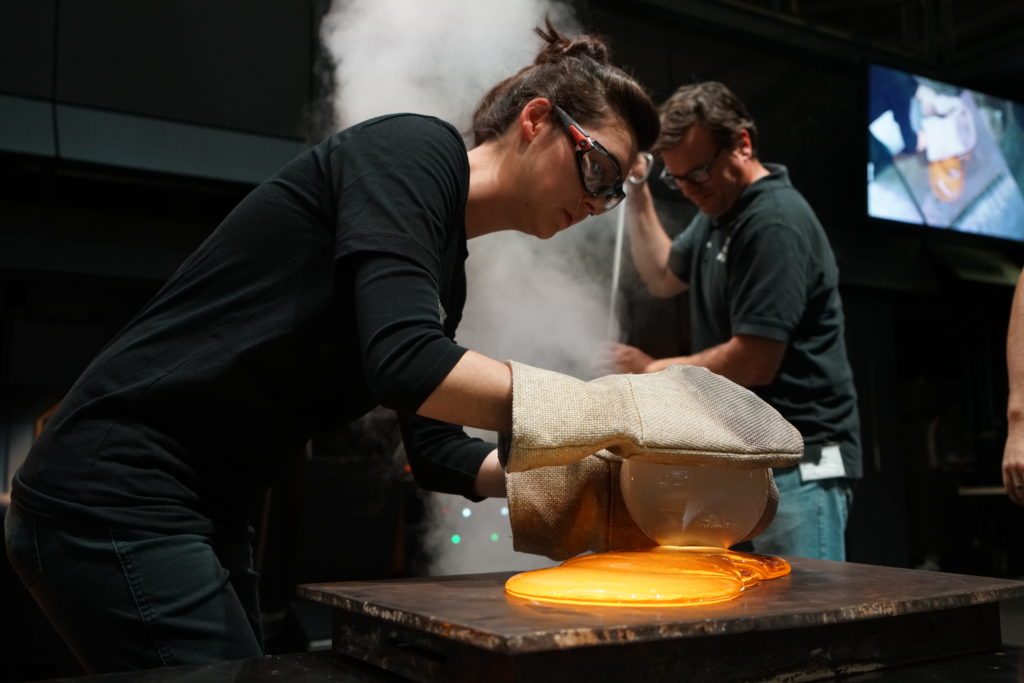
Portnoy working in residency. All photography by Amanda Sterling.
Elinor Portnoy, a London–based product designer, just finished a joint residency at the Corning Museum of Glass in Corning, New York, and the John Michael Kohler Arts Center in Sheboygan, Wisconsin. During this time, Portnoy experimented with the fluidity of glass—pouring hot glass over cast iron molds and showing the natural process the material goes through to harden. Her work exists somewhere between art and design, displaying the movement of the material while also demonstrating its capabilities.
Katherine Lanza/MODERN MAGAZINE: Tell us a bit about your background. How did you become interested in working with glass?
Elinor Portnoy: Throughout my youth I studied classic art forms and the history of art, but I turned to industrial design for my studies and early years as a professional. These interests still influence my work deeply, and I am drawn to work that has some functional or rational uniqueness behind it. However, after years of working in mass-produced plastic and other industrial processes, I became increasingly interested in processes of making where I can directly control all of the steps from the idea to the finished form. Glass became a fascination of mine because it enabled me to create products, while also experimenting with the material, shaping it, and making processes myself in a very intimate way.
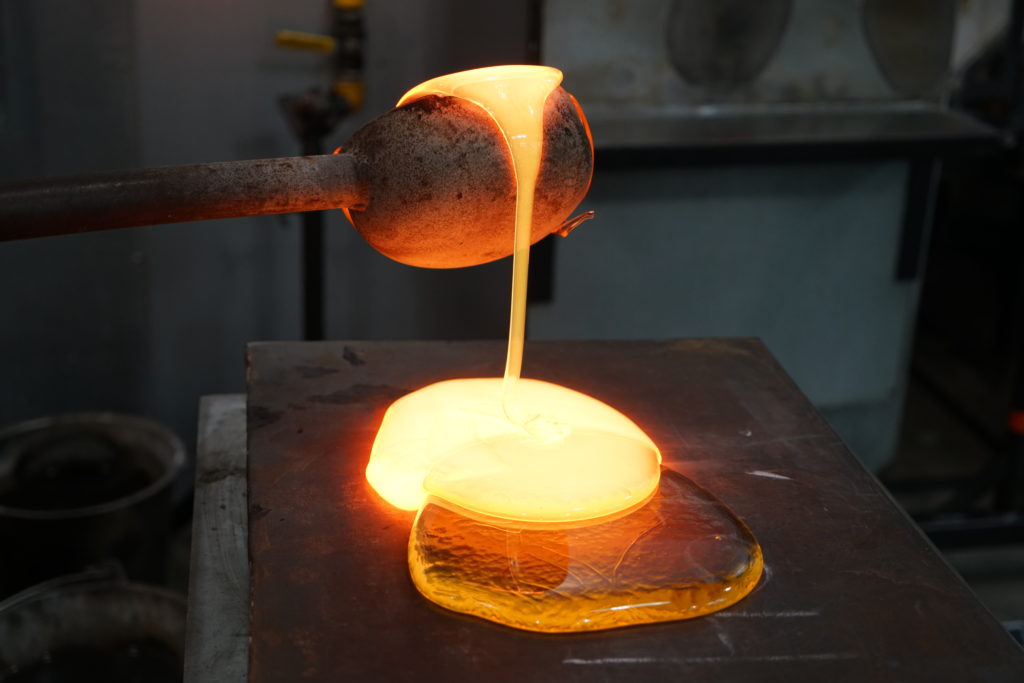
MM: Your work at the Corning Museum is different than work you have done in the past. How did you get the idea for this project?
EP: This project really started for me with a project I did in my masters program at Royal College of Art in London called “Glass Shakes.” There, I explored how the fluidity of glass enables us to create forms which seem softer and lighter than the material really is and explore the process of free melting of glass in molds. However, I was limited in the RCA by the tools and glass that was available there. In the joint residency with Kohler and Corning Museum of Glass I could really develop both my own molds in cast iron at the Kohler factory and then use these at Corning to freely flow molten glass over them in a variety of colors, and gradually developed the idea of “frozen material in flow,” not unlike lava flows that occur in nature.
MM: Can you walk us through your process?
EP: With the incredible facilities in the studios at Corning I was able to melt pots of colored glass over the molds I cast, and let several colors “compete” for the space on the mold. But as the residency progressed I became more interested in the forms created when the glass overflows the mold. And so I created several variations of puddles of glass that are organically flowing outside of molds and over each other.
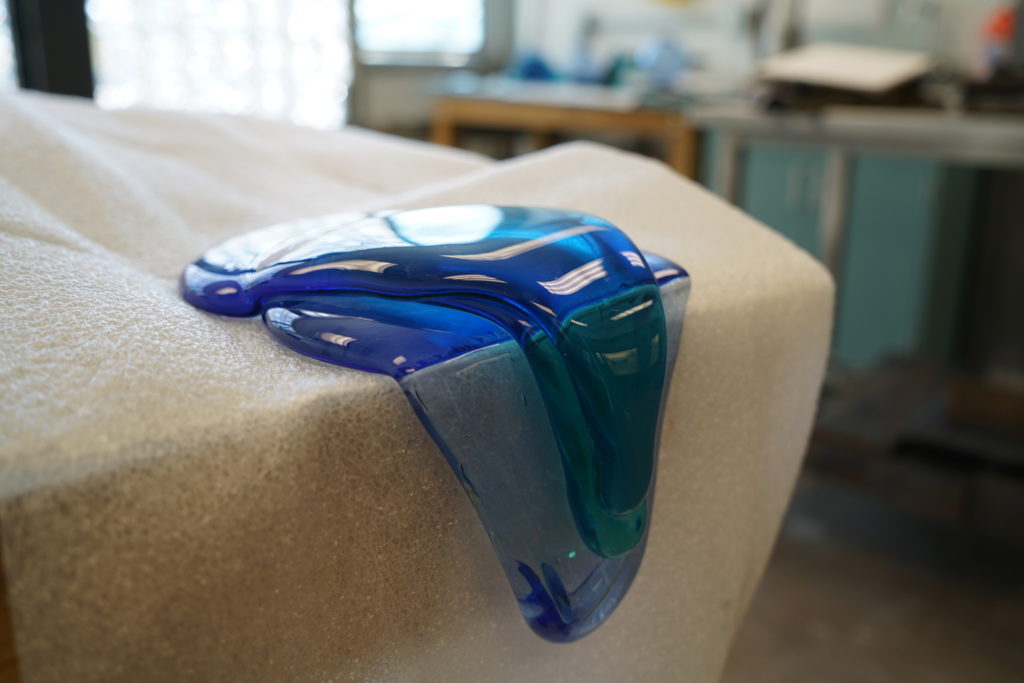
MM: What is your favorite piece?
EP: I feel most satisfied with a specific bowl. It has this bright purplish-pink hue that radiates differently from various angles. You know colors in glass are made by mixing different metal oxides and rare earth minerals, and not all colors are “equal.” This pink uses erbium oxides which are naturally rare but are so captivating to look at! Moreover, the bowl is a result of an experiment: with the expert technicians we’ve picked the puddles on a pontil, reheated them, and free-formed them much like you would do with a blown piece. This is an unconventional way of creating a vessel form, so it all goes back to my very design-oriented interest in techniques and processes and how the material behaves.
MM: Now that you finished your residency, what is next for you?
EP: This is the big question, right? There’s a work I started, actually in ceramics, in the time between coming back from Kohler and traveling to Corning. It’s being presented at a group show in Israel. So I’ll be back to the studio in London to work. And I hope to have an opportunity to come back to Corning—it was such an exhilarating experience!
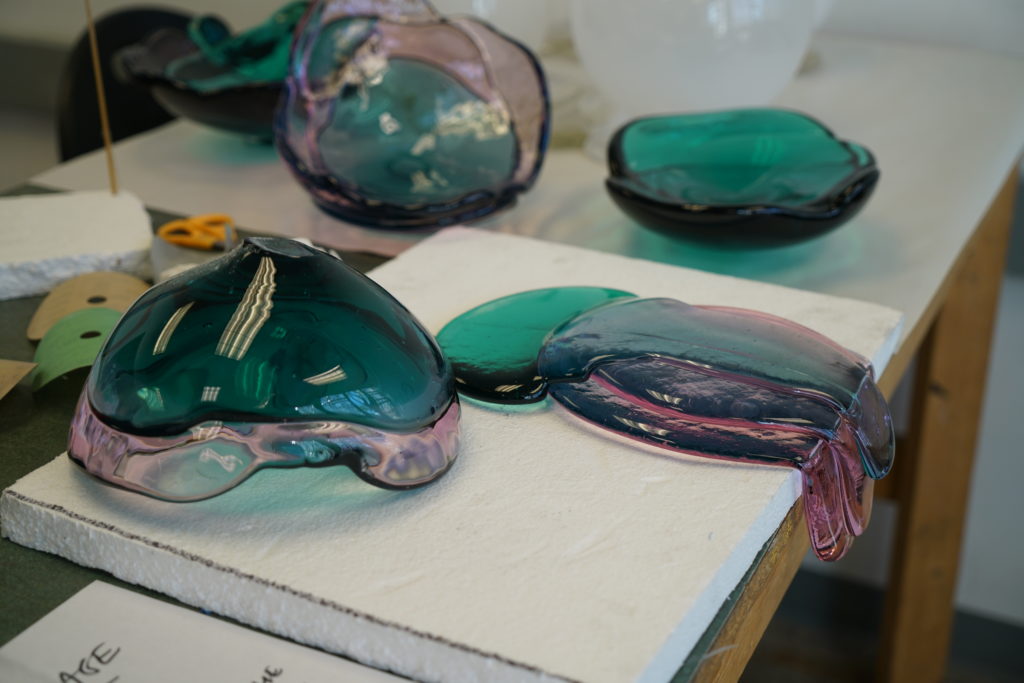
Check out more of Elinor’s work on her website.









